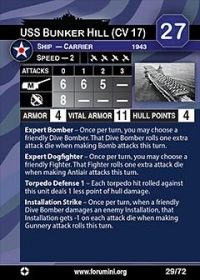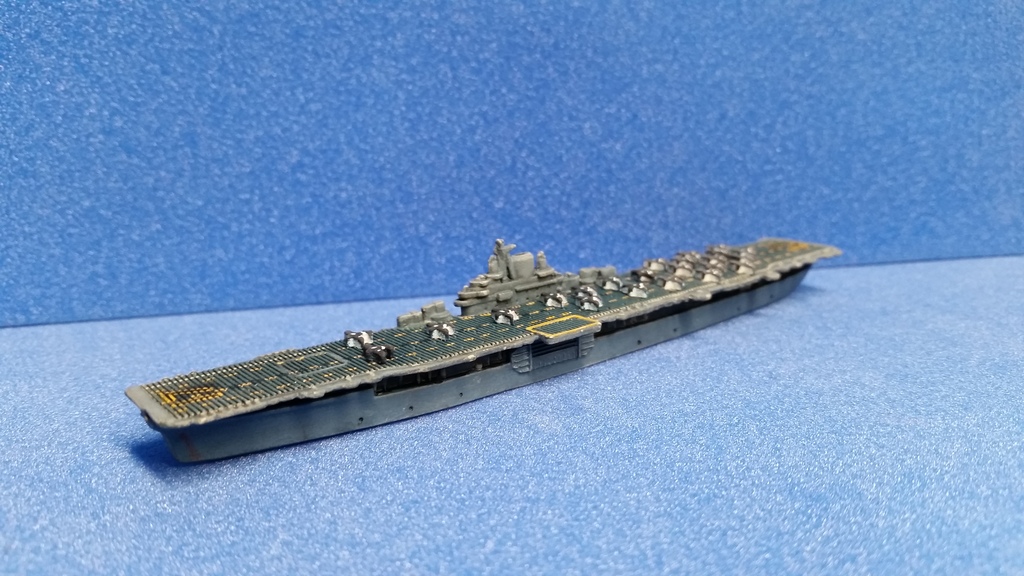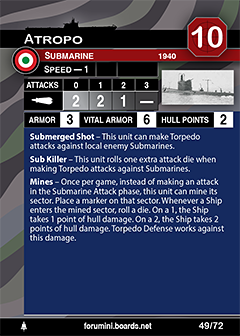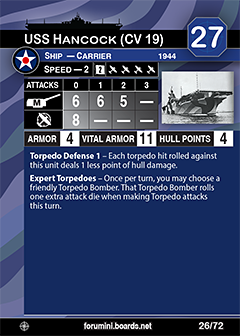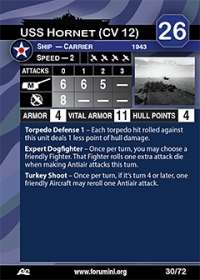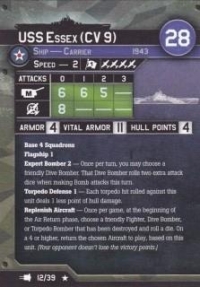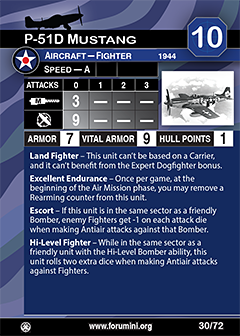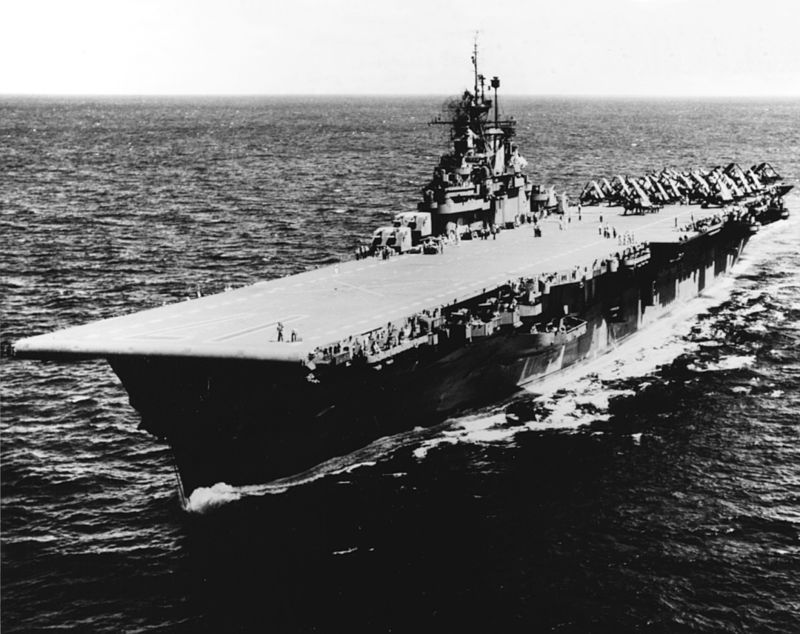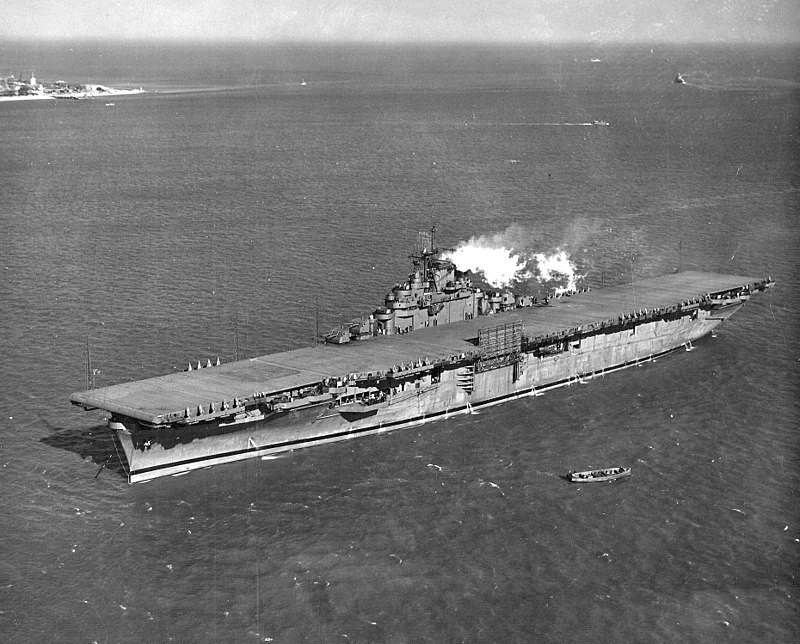Prototype: USS Bunker Hill (CV/CVA/CVS-17, AVT-9) was one of 24 Essex-class aircraft carriers built during World War II for the United States Navy. The ship was named for the Battle of Bunker Hill in the American Revolutionary War. Commissioned in May 1943 and sent to the Pacific Theater of Operations, the ship participated in battles in the Southwest Pacific, Central Pacific and the drive toward Japan through Iwo Jima, Okinawa, and air raids on the Japanese homeland.
While covering the invasion of Okinawa, Bunker Hill was struck by two kamikazes in quick succession, setting the vessel on fire. Casualties exceeded 600, including 346 confirmed dead and an additional 43 missing, the second heaviest personnel losses suffered by any carrier to survive the war after Franklin. After the attack, Bunker Hill returned to the U.S. mainland and was still under repair when hostilities ended.
After the war, Bunker Hill was employed as a troop transport bringing American service members back from the Pacific, and decommissioned in 1947. While in reserve the vessel was reclassified as an attack carrier (CVA), then an antisubmarine carrier (CVS) and finally an Auxiliary Aircraft Landing Training Ship (AVT), but was never modernized and never saw active service again. Bunker Hill and Franklin were the only Essex-class ships never recommissioned after World War II.
Stricken from the Naval Vessel Register in 1966, Bunker Hill served as an electronics test platform for many years in San Diego Bay, and was sold for scrap in 1973. An effort to save her as a museum ship in 1972 was unsuccessful.
While covering the invasion of Okinawa, Bunker Hill was struck by two kamikazes in quick succession, setting the vessel on fire. Casualties exceeded 600, including 346 confirmed dead and an additional 43 missing, the second heaviest personnel losses suffered by any carrier to survive the war after Franklin. After the attack, Bunker Hill returned to the U.S. mainland and was still under repair when hostilities ended.
After the war, Bunker Hill was employed as a troop transport bringing American service members back from the Pacific, and decommissioned in 1947. While in reserve the vessel was reclassified as an attack carrier (CVA), then an antisubmarine carrier (CVS) and finally an Auxiliary Aircraft Landing Training Ship (AVT), but was never modernized and never saw active service again. Bunker Hill and Franklin were the only Essex-class ships never recommissioned after World War II.
Stricken from the Naval Vessel Register in 1966, Bunker Hill served as an electronics test platform for many years in San Diego Bay, and was sold for scrap in 1973. An effort to save her as a museum ship in 1972 was unsuccessful.
Class History: The Essex class was a class of aircraft carriers of the United States Navy that constituted the 20th century's most numerous class of capital ships. The class consisted of 24 vessels, which came in both "short-hull" and "long-hull" versions. Thirty-two ships were originally ordered; however as World War II wound down, six were canceled before construction, and two were canceled after construction had begun. No Essex-class ships were lost to enemy action, despite several vessels sustaining very heavy damage. The Essex-class carriers were the backbone of the U.S. Navy's combat strength during World War II from mid-1943 on, and, along with the addition of the three Midway class carriers just after the war, continued to be the heart of U.S. Naval strength until the supercarriers began to come into the fleet in numbers during the 1960s and 1970s.
Country: The U.S. is a country of 50 states covering a vast swath of North America, with Alaska in the northwest and Hawaii extending the nation’s presence into the Pacific Ocean. Major Atlantic Coast cities are New York, a global finance and culture center, and capital Washington, DC. Midwestern metropolis Chicago is known for influential architecture and on the west coast, Los Angeles' Hollywood is famed for filmmaking.
Item created by: Lethe on 2015-05-31 17:46:30. Last edited by gdm on 2019-08-17 07:49:24
If you see errors or missing data in this entry, please feel free to log in and edit it. Anyone with a Gmail account can log in instantly.
If you see errors or missing data in this entry, please feel free to log in and edit it. Anyone with a Gmail account can log in instantly.


